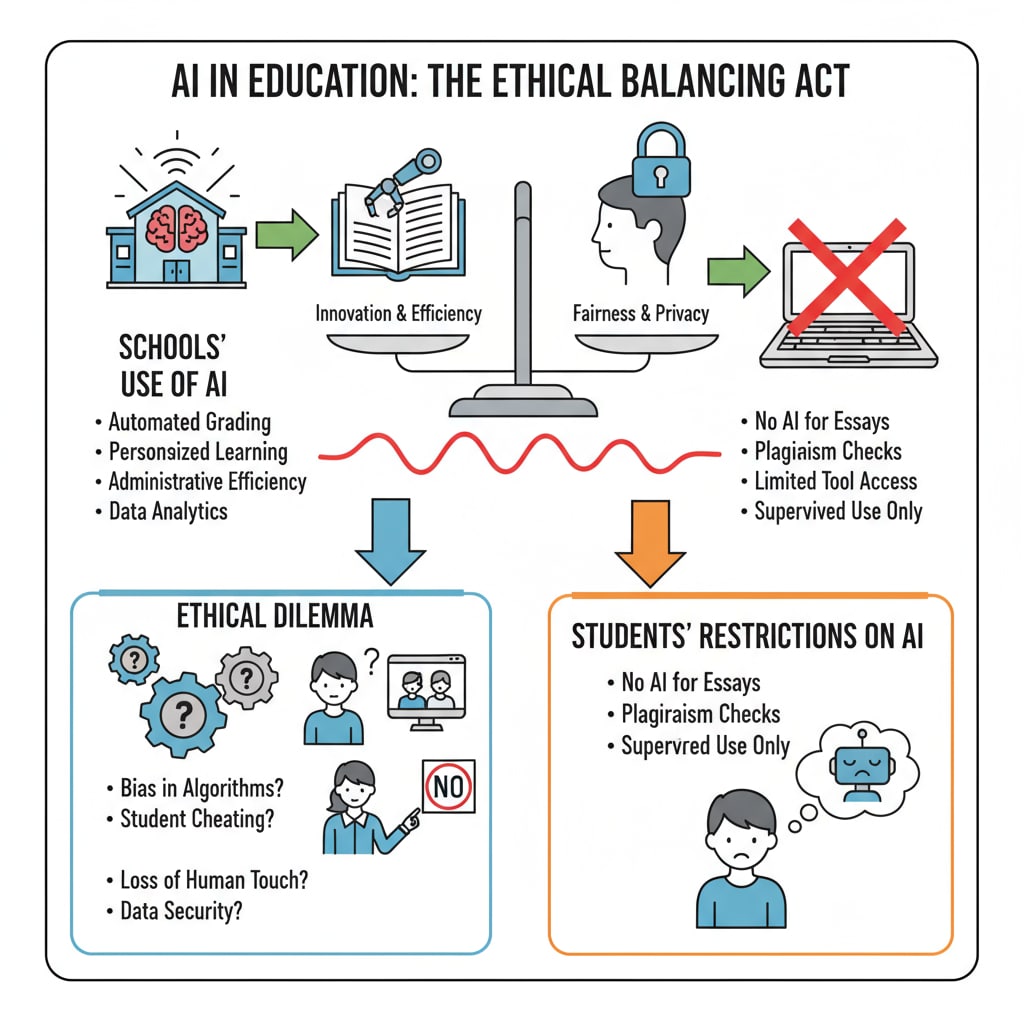In the era of rapid technological advancement, the use of AI-generated images on high school websites has emerged as a significant topic within the realm of educational ethics. As artificial intelligence becomes more accessible, K12 educational institutions are increasingly incorporating AI-generated visuals into their official online platforms. This trend, however, has sparked a profound debate about the implications for digital integrity and the lessons we impart to students.

The AI Adoption in High School Websites
The allure of AI-generated images for high school websites is understandable. These images can provide high-quality, customized visuals at a fraction of the cost and time required for traditional photography or graphic design. For example, a school can quickly generate an image of a bustling campus filled with diverse students engaged in various activities, creating an inviting and dynamic online presence. AI in education on Wikipedia details how technology is being integrated into different aspects of the educational sector, including website design.
The Ethical Dilemma
However, the use of AI-generated images by schools while banning students from using AI tools presents a stark ethical dilemma. On one hand, schools are promoting the values of honesty, hard work, and originality in students’ academic work. They enforce strict rules against plagiarism and the use of unauthorized assistance, including AI. On the other hand, by using AI-generated images on their websites, schools may be sending a mixed message. Ethics on Britannica defines ethics as a set of moral principles, and this situation clearly challenges the consistency of those principles in the educational context.

This double standard can have detrimental effects on students’ understanding of integrity. Students may question the authenticity of the educational institution’s values. If the school itself is using technology to bypass traditional creative processes, why should they be held to a different standard? It undermines the trust between students and educators and can erode the foundation of the educational environment.
In addition, it also raises questions about the transparency of the school’s actions. Should schools be upfront about the use of AI-generated images on their websites? Transparency is crucial in maintaining credibility and ensuring that students and the wider community are aware of the sources of the content they are consuming.
Readability guidance: We’ve used short paragraphs to make the content easy to digest. The two H2 sections clearly outline different aspects of the issue. Transition words like ‘however’ and ‘in addition’ have been used to connect ideas smoothly. Lists could be further incorporated in future expansions to break down complex points.


